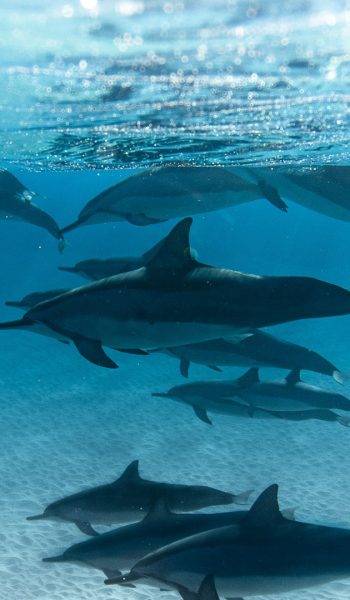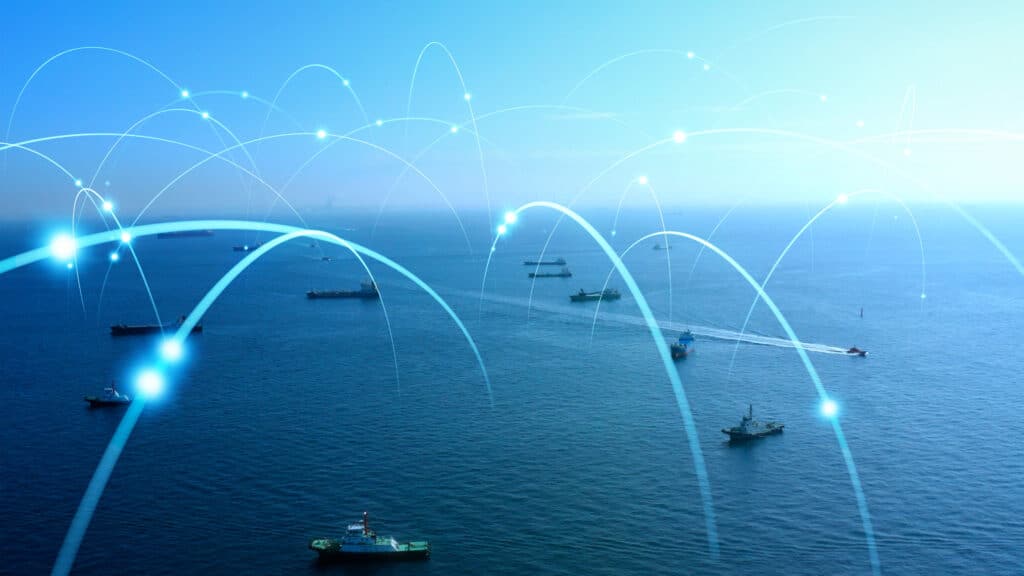With 90% of goods transported by sea across the globe, and a global value worth $1.5 trillion, the maritime industry is a strategic economic sector. But it is also one of the most polluting activities. Artificial intelligence-based systems are bringing changes, helping the shipping business to be more efficient, reduce its environmental impact and improve its profitability.
How can AI benefit the maritime industry’s sustainability and profitability?
The transport chain includes various stakeholders, from shipping lines, ports, logistics providers, customs, road haulage companies, rail lines, etc. But the sea transportation is deemed to be the most complex part of it. The combination of long distances and sailing times, port congestion, empty container shortage, weather conditions, and all other natural hazards create a high level of uncertainty. Yet, the players in the shipping industry have been used to rely on people’s skills and experience. But this way of working is no longer acceptable, considering the growth of global trade, the huge volumes of data that are generated and exchanged every day within the sea shipping world, and all new challenges that arose these past years.
Thanks to advanced technologies, the maritime industry has the tools to make the processes and workflows more efficient, safer, more environmentally friendly and cost-efficient. Artificial intelligence works together with Machine learning (ML), Big data, blockchain, Internet of Goods (IoT) to deal with all these aspects effectively.
Your environmental monitoring at your fingertips!
Optimize your environmental monitoring, become smarter and more sustainable with a unified system that gathers all your environmental sensors & data in one place.

For ships
In the commercial shipping sector, one of the major goals to be achieved is a 100% autonomous ship. This would be a digitalized smart ship without a crew. Although we are still a long way away from that, considerable progress has been made. Thanks to the internet, data can be collected and exchanged in real time between land and sea to take up the main challenges.
- Navigation: information from captors is sent in real-time from the vessel fleet to the shipping company’s office and ports, where they are combined with satellite data (weather forecast, port constraints in some transshipment countries or other situations…). Data analytics ease the tracking and helps the shipping lines optimize each ship’s route.
- Safety: there is another project designed to add image recognition to positioning systems and maritime radars, thanks to sensor data from thermal and ultra-low-light cameras in offshore locations. The aim is to provide assistance to vessels to prevent collisions in busy waterways, knowing that 75% to 95% of all accidents at sea are caused by human error.
- Cybersecurity: AI-based system can monitor the digital flow of data 24/7 and in case it detects anomalies, it automatically triggers the appropriate action.
- Carbon impact: route optimization contributes to fuel and energy consumption for all ships, leading to fewer greenhouse gas emissions. This aspect is key for compliance with environmental regulations and in the fight against climate changes.
For port operations
Port operations involve several players and large volumes of data to be exchanged. Leveraging AI technology, several key players have developed innovative solutions to move towards fully digitalized smart ports.
Among them, Sinay’s range of logistics tools includes an Estimated Time of Arrival (ETA) module using the ship automatic identification system (AIS). Shipping companies and port authorities can calculate each ship’s accurate time of arrival at the port to coordinate port operations more effectively (staff, cranes, trucks, etc.), reduce dwell time, and lower CO2 emissions.
Another example, in the Port of Antwerp, a system using AIS and cameras allow the tracking of a specific ships’ position in the port. The aim is to better handle the traffic flow and avoid congestion. AI-based robots perform various tasks autonomously in a port setting such as containers unpacking, hulls of ships’ inspection and cleaning, etc. In some ports, AI applications are used by crane operators, captains…
For ships and port facilities maintenance

AI technology using machinery and engines’ data history transmitted by connected sensors allows predictive maintenance. It is possible to predict the condition of individual parts or the system as a whole and determine the frequency and level of maintenance required. Such approach helps prevent defects or at least reduce repair time and downtime to a minimum.
In port facilities, drones are used to oversee inaccessible areas, for example fuel depots, ship superstructures and cranes and provide reliable insights to maintenance crews, allowing them to provide proactive assistance.
For underwater works
Some operations have to be done underwater, for example for oil rigs, hulls of ships’ inspections, submarine cable installation, offshore wind farms, etc. Big data and robotic AI applications allow process automation to overcome dangers for workers. On another side, this will encourage submarine research and marine ecosystem protection.
For marine insurance
By analyzing real-time data taken from various sources and models building, insurance firms have a better understanding of the risks and can optimize policies on that basis. They can offer competitive coverage at the best price.
With the technology, several tasks are automated, which improves security and transparency and lowers the amount of work required for the insurance companies’ staff. As a result, premium calculation and files processing are faster and more accurate than ever, improve their customer service.
The overall benefits of the optimizations afforded by AI technology are sustainability improvement, time, and money savings for the entire maritime industry.
Your environmental monitoring at your fingertips!
Optimize your environmental monitoring, become smarter and more sustainable with a unified system that gathers all your environmental sensors & data in one place.

What are the risks and challenges that come with AI developments within the maritime industry?
Whereas the opportunities for AI applications are virtually endless, various risks have been identified.
- Validation process: testing autonomous systems on a ship is difficult because of the complex access and the unexpected situations that may occur at sea or in port. Plus, higher costs are involved, and an incident might have dramatic consequences.
- Data integration: AI cannot work without data. Therefore, companies that are looking forward to developing AI technology need to have as much data as possible. But when multiple parties are involved in a project, it might be hard to have all of them share their data. And even if they do, interface compatibility makes data integration difficult.
- Human and financial resources: because AI projects require several months and significant resources (skills, investment), small and medium-sized companies must rely on third parties such as research and funding institutions to help them achieve their goal.
- Regulatory and legal constraints: whereas advancements in technology sometimes happen quite fast, regulation changes take time. Therefore, the project owners struggle with compliance issues.
- Cybersecurity: digitalization and online data exchange come with high risk of cyber-attacks, which makes IT security measures vital at each step.
- People management: employees fear the loss of jobs if AI is introduced within the company. This fear may lead to reluctance to get involved into the project or to use the new tools, or even to sabotage. The effort to raise awareness among people is vital. They must understand how this technology can ease their daily work and allow them to keep control over a complex networked world. That’s the only way for our globalized economy to keep on running.
- All countries, areas and companies are not at the same stage. While some solutions are already on the market whereas some applications are still in the early stages of development, mainly at the testing stage.
Conclusion about more sustainable maritime industries using artificial intelligence algorithms
As mentioned before, there are great challenges to be tackled in the next few years to successfully introduce AI into the maritime supply chain. However, it is obvious that AI technology will play a critical role in optimizing processes in all branches of the maritime industry. In fact, the numerous development opportunities and benefits will not only concern ports and sea transport, but also renewables, intelligent and more sustainable fishing, effective marine ecosystem protection… This will help us, humans, and businesses on several aspects: better risk management, swift and relevant decision–making, time and money savings, and pollution reduction.
Frequently Asked Questions About: ARTIFICIAL INTELLIGENCE & SUSTAINABILITY
Machine learning, a subset of AI, uses advanced algorithms that can process a lot of data, recognize patterns, and learn to understand how different variables will impact each other.
AI machine learning can thus help the fight against climate change through means of problem-solving, predictability, and forecasting.
Sustainability means meeting our own needs without compromising the ability of future generations to meet their own needs. The goal is to maintain an ecological balance.
Artificial Intelligence allows the production of machines that have the came capibilities as the human mind to performe on different tasks.
In simple words, it’s the ability of machines to perform human tasks.
The tasks can be: recognize pictures, solve problems, learn, understand language…





